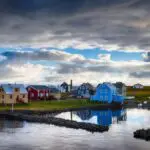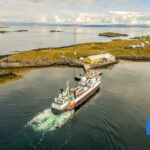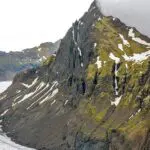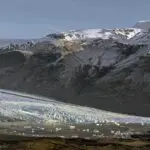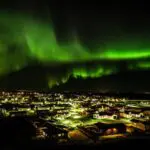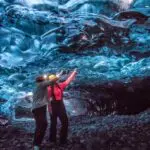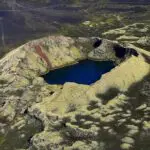If there’s something there’s plenty of in Iceland, it’s fish. It’s no secret that Icelanders love fish. After all, we live on an island, and fishing is one of Iceland’s biggest industries.
If you want to learn more about our history with fish, we recommend you check out the Reykjavik Maritime Museum in Grandi. If you get the Reykjavik City Card, you get free entrance.
But what fish do Icelanders eat and not eat? Icelanders have a peculiar history with fish. Despite its abundance in the Icelandic waters, there are a few that we just didn’t eat. Why? Because they were ugly were just simply found uninteresting.
You can read more about the most common fish in Iceland lower in the post or by clicking here.
What are the most popular fish people eat at home?
Cod and haddock are, without a doubt, the most common fish you will find on people’s dinner tables. Ling, plaice, salmon, and redfish are also reasonably popular. Special treat fish are halibut, wolffish, and monkfish. There are, of course, many different fish dishes. Everything from simple boiled fish to more elaborate dishes is served. Check out our plokkfiskur, parmesan breaded fish, and fishball recipes.
Are there fish Icelanders don’t eat but still fish?
Yes, two of them are mackerel and capelin. Almost all capelin fished around Iceland is sold to Japan, where the fish is considered a delicacy.
The mackerel quota in Icelandic waters is enormous, around 160.000 tonnes. It is nearly all exported, and you will only find mackerel canned in stores to use as bread spreads.
So what about those ugly fish?
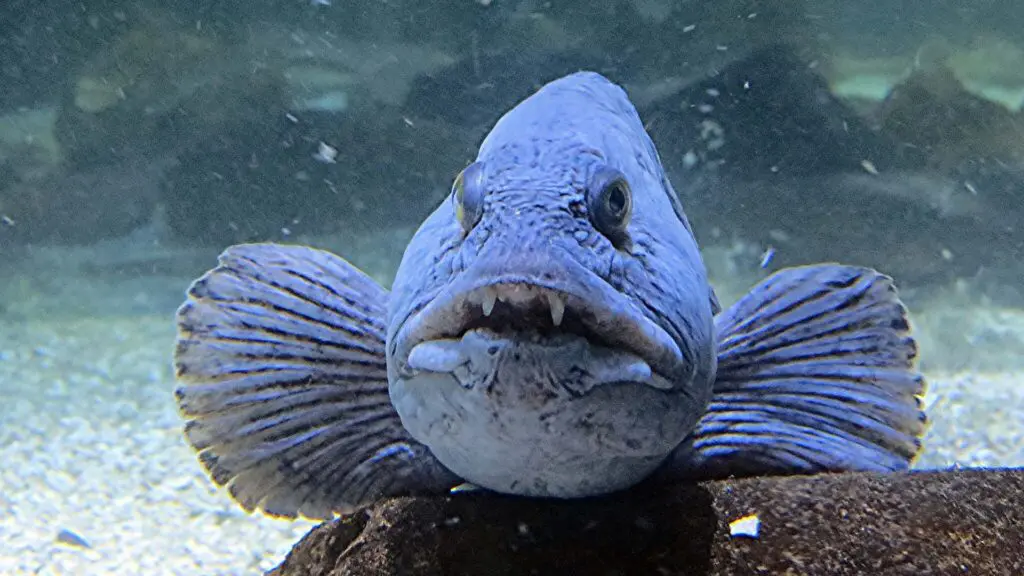
Wolffish and monkfish were ugly fish Icelanders didn’t want to eat. Today, they are considered some of the most delicious fish and are sometimes preferred over lobster.
What fish are you going to find in the supermarkets?
In Bónus, you will most likely find fresh haddock, cod, and salmon. It is usually kept in the same cooler as dairy. In the freezers, you will find a few types of shrimp, scallops, langoustine, salmon, haddock, salted fish, and other common fish.
You will find all the same fish in Krónan as in Bónus, as well as trout.
In Hagkaup in the shopping mall Kringlan, you can buy fresh fish and all the same types of fish in Krónan and Bónus.
We recommend you try out any of the actual fish stores if you want something else or specific pieces of fish. Fish stores worth a mention are: Fiskbúð Fúsa, Fiskikóngurinn, and Hafið fiskverslun.
The best restaurants for fish in Iceland
Reykjavik has a few restaurants that specialize in fish. There’s, of course, the renowned fish and chips truck and Reykjavik Fish and Chips, but for a more varied menu, check out these restaurants:
The Fish Market
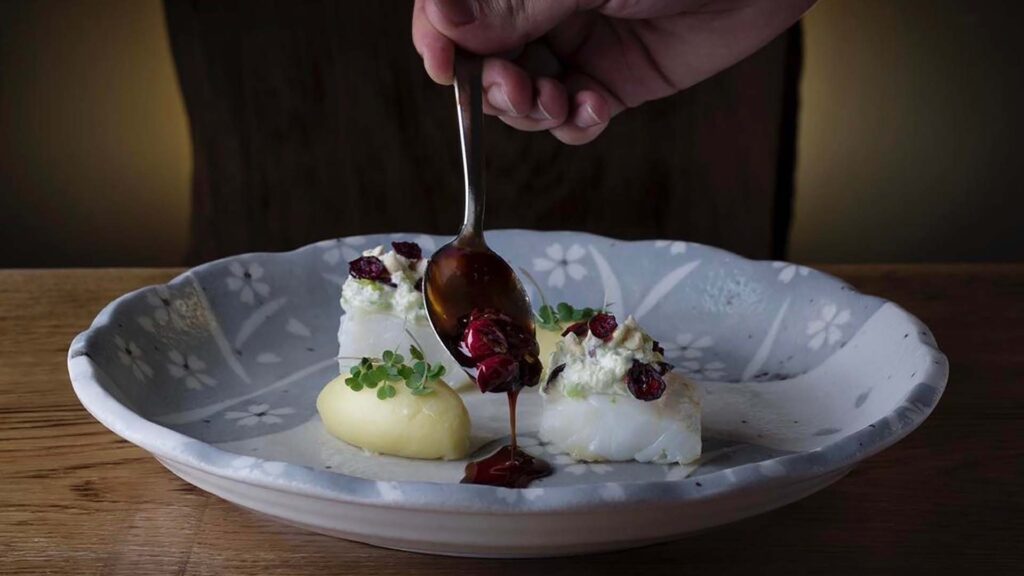
The Fish Market offers visitors high-quality products from fresh Icelandic ingredients and a dynamic and warm atmosphere. They offer sushi, fish plates, and grilled food (meat and fish).
You will find squid tempura, king prawn, scallop, tuna, arctic char, soft shell crab, mussels, sturgeon caviar, salmon, halibut, and cod on their menu.
- Aðalstræti 12
- 101 Reykjavik
- Opening hours: Sunday – Thursday 17:30 – 22:30, Friday – Saturday 17:30 – 23:00
The Fish Company
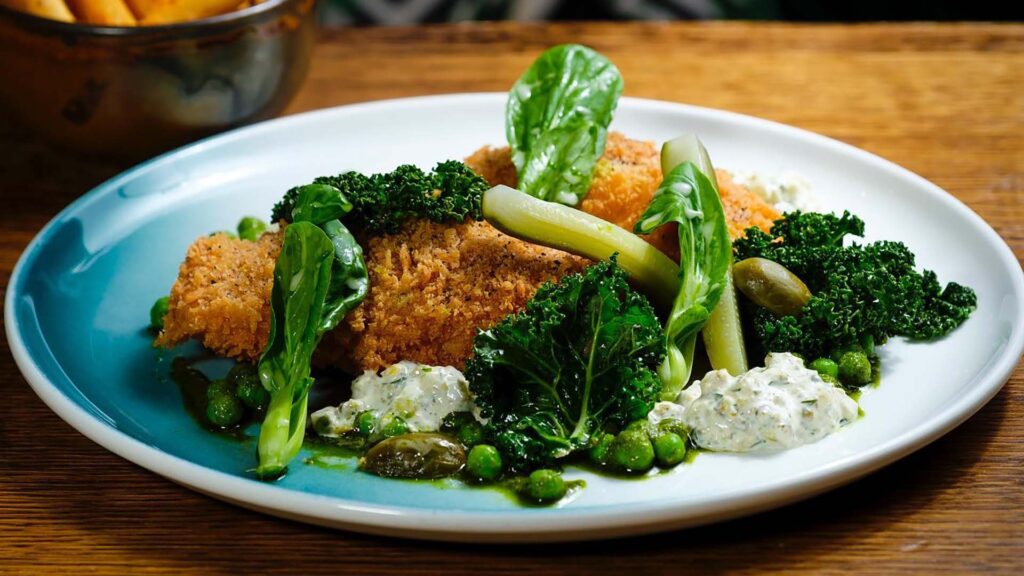
The Fish Company‘s menu courses are influenced by Nordic fusion but firmly grounded in solid Icelandic cuisine. If you want sushi, the Fish Company has some of the best sushi available in the country.
You will find cod, Arctic char, lobster, king prawns, and plaice on their menu. For sushi, there’s added salmon, softshell crab, and tuna.
- Vesturgata 2a
- 101 Reykjavik
- Opening hours: Monday – Thursday: 11:30 am – 2:30 pm & 5:00 pm – 10:30 pm, Friday: 11:30 am – 2:30 pm & 5:00 pm – 11:00 pm, Saturday: 5:00 pm – 11:30 pm, Sunday: 5:00 pm – 10:30 pm
Sjávargrillið
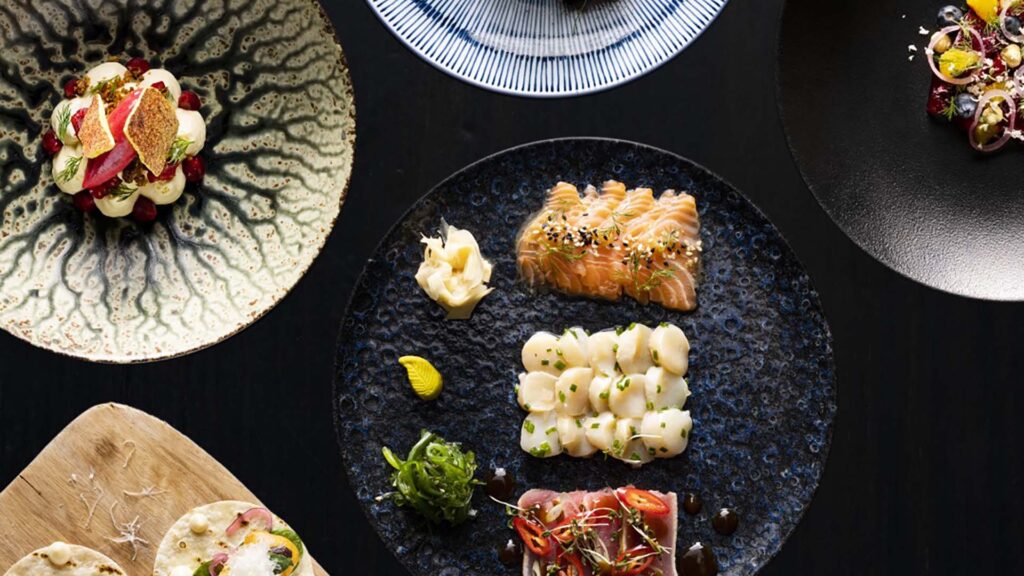
The Seafood Grill offers seafood dishes that are both Icelandic and international at the same time. On their menu, you will find lobster tacos, salted fish, scallops, giant tiger prawn, cod, and “fish of the day,” which guests will have to ask about.
- Skólavörðustígur 14
- 101 Reykjavik
- Opening hours: Monday – Friday 11:30 – 14:30 and 17:00 – 22:00, Saturday – Sunday 17:00 – 22:00
Sægreifinn
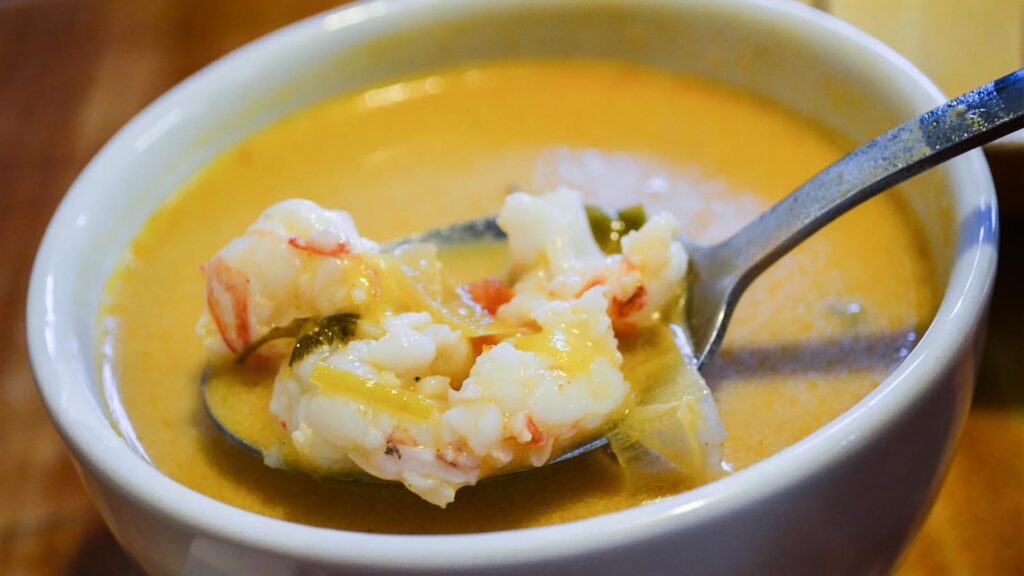
The Seabaron has one of the best lobster soups in Iceland. They also have fish skewers and more on offer. The Seabaron is one of the visits on our Reykjavik Food Lovers Tour.
The fish used for the skewers change depending on which fish they get. Among those often available are cod, ling, salmon, rainbow trout, giant prawn, wolffish, halibut, monkfish, redfish, plaice, and minke whale.
Skate is available between October and March on the first Saturday of the month.
- Geirsgata 8
- 101 Reykjavik
- Opening hours: Every day, 11:30-16:00 and 18:00-22:00
Messinn
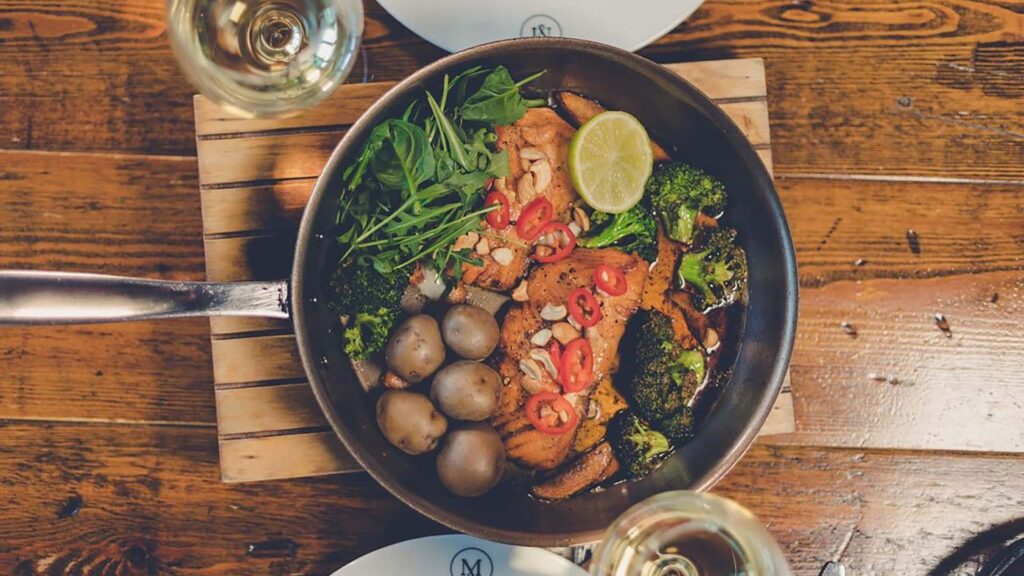
Messinn is a seafood restaurant in Lækjargata, downtown Reykjavik. They specialize in fresh seafood, which they offer for lunch and dinner. Their speciality is their fish pans, but they serve newly cooked fish straight from the kitchen in pans.
You can find lobster soup, gravlax, giant prawns, plokkfiskur, fish tongues, plaice, Arctic char, salmon, wolffish, and cod on their menu.
- Lækjargata 6b
- 101 Reykjavik
- Opening hours: Every day 11:30-22:00
Þrír Frakkar
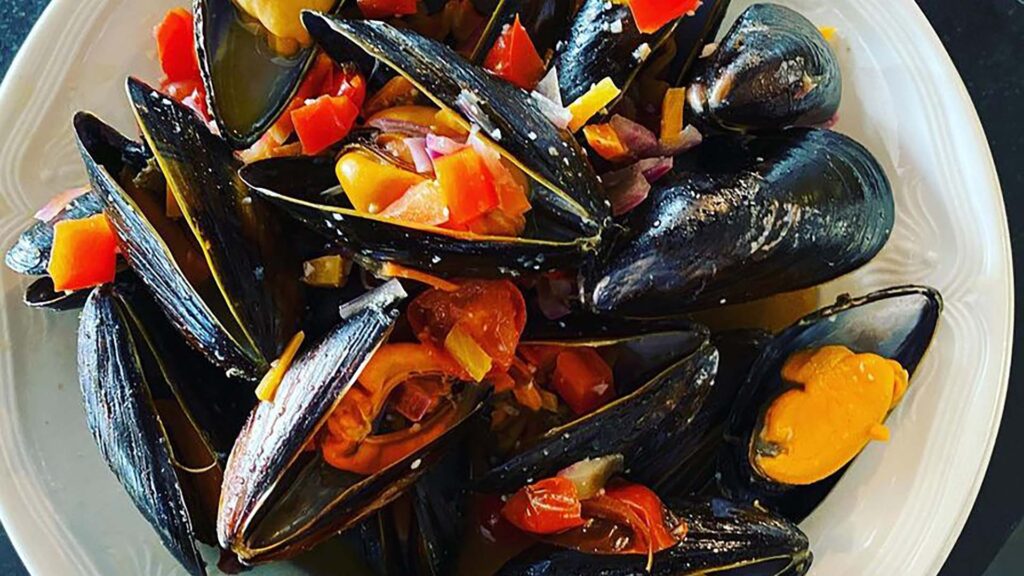
The restaurant opened in 1989 and has been run by the same family. Their speciality is fish courses, but you will also find meat dishes on their menu. You will also find more of the rarer dishes in Iceland on their menu: whale, puffin, and horse meat.
You will also find shark, herring, gravlax, plokkfiskur, halibut, cod, fish tongues, wolffish, lobster, plaice, and shrimp on their menu.
- Baldursgata 14
- 101 Reykjavik
- Opening hours: Lunch: Monday – Friday 11:30 – 14:00, Dinner: Sunday- Thursday 18:00 – 22:00, Friday – Saturday 18:00 – 22:30
What are the most common fish in Iceland?
Cod
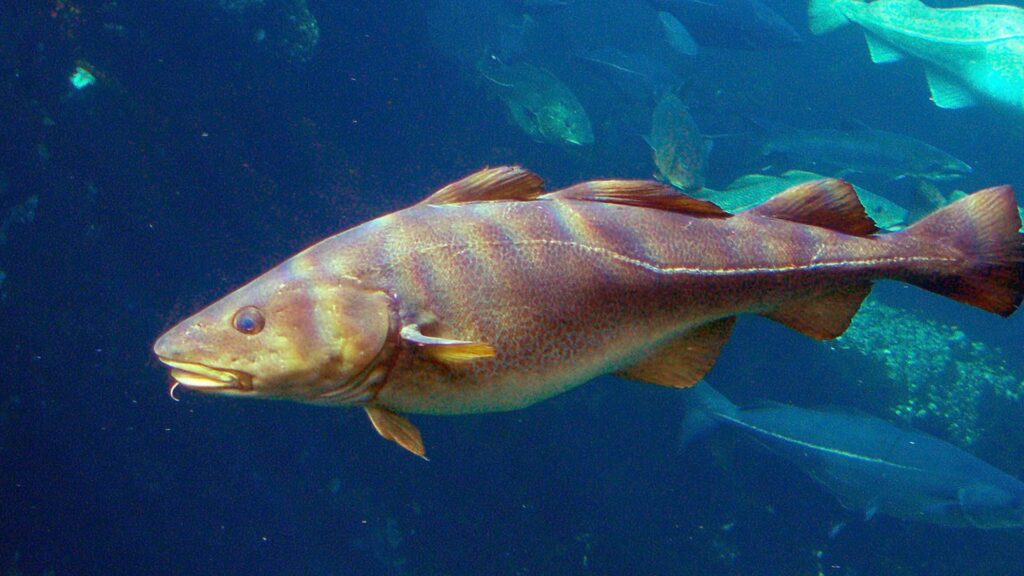
Cod can grow quite large. The largest fish ever caught was 2 meters long (6’5″). However, catch sizes are usually much smaller, between 45-105cm.
The cod has been one of the most important fishes in the North Atlantic for about a thousand years. Cod is “the fish” in Iceland. It is by far the most important marine resource there. Its economic importance has only briefly been surpassed by herring in the 20th century and possibly the Greenland shark in the 19th. The history of fisheries around Iceland has more or less been about cod.
Cod are caught all around Iceland and throughout the year. However, fishing is still highest in the winter season on the spawning grounds and along the migration routes to the spawning grounds. During other seasons, the highest catches are on the main feeding grounds northwest and southeast of Iceland. It is mainly caught at depths of 100 – 250 m and ocean temperatures of 4 – 7 °C.
Haddock
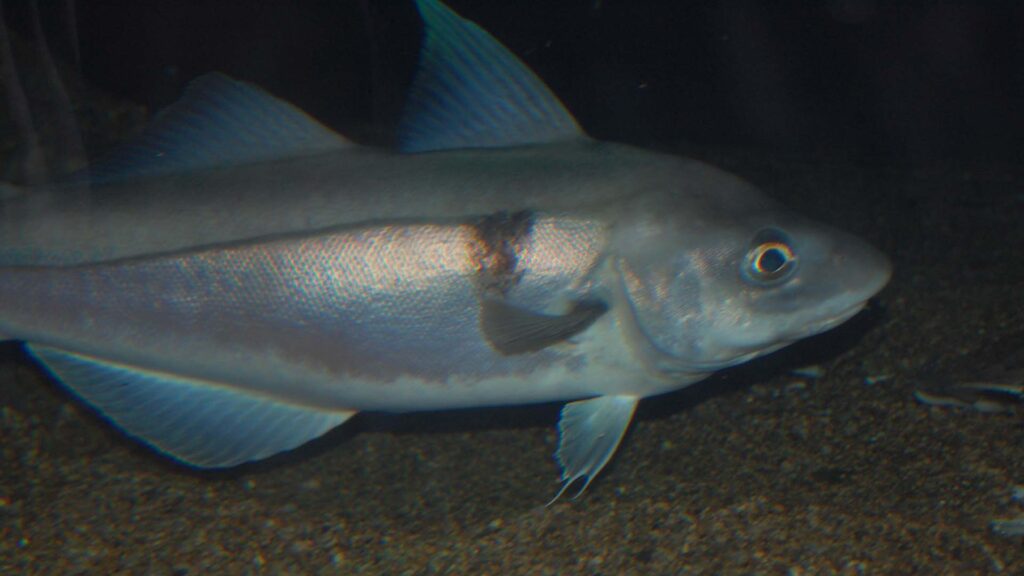
Haddock grows 50-65 cm long, but the largest ever caught was 112 cm. The main food of the haddock is bristle worms and small bivalves buried in the sediments. However, the haddock will not refuse such delicacies as capelin or sand-eels if they are available.
Haddock is caught all around Iceland and throughout the year. The best grounds are off the west coast. The fisheries are evenly spread over the year. Haddock is mainly caught by bottom trawl, but an increasing share is taken with longlines and Danish seines.
Redfish and golden redfish
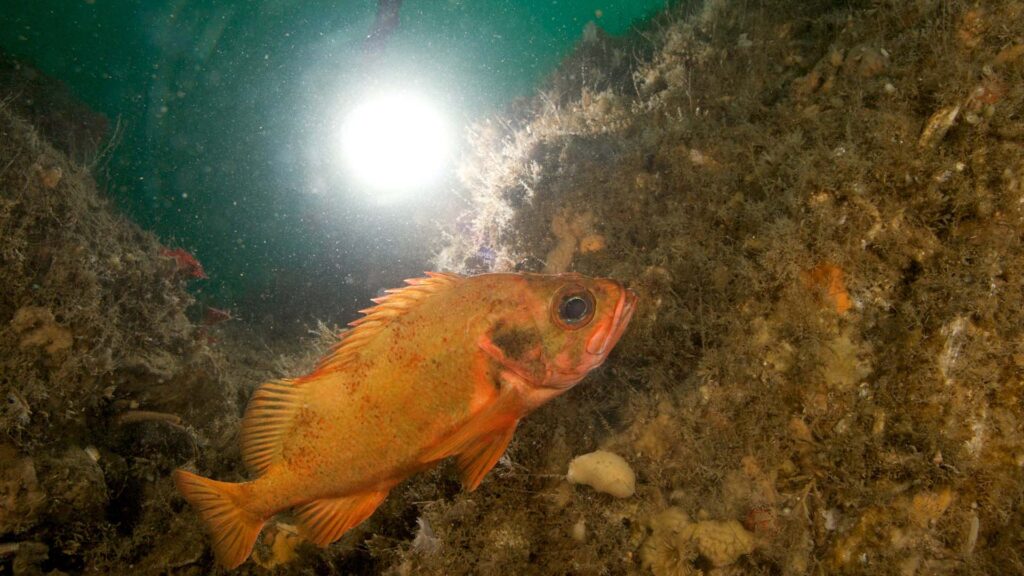
The golden redfish is one of Iceland’s most common and important commercial fish. It is generally about 35-40cm long, but occasionally a giant fish is caught, which is about 100cm long and 15kg.
Redfish can get very old, probably dozens of years old. However, it is challenging to determine exactly how old they get.
Fishermen had little interest in the fish until the 1950s, when the catch size increased quickly. It was one of those fish fishermen threw out again if it was accidentally caught.
Wolffish
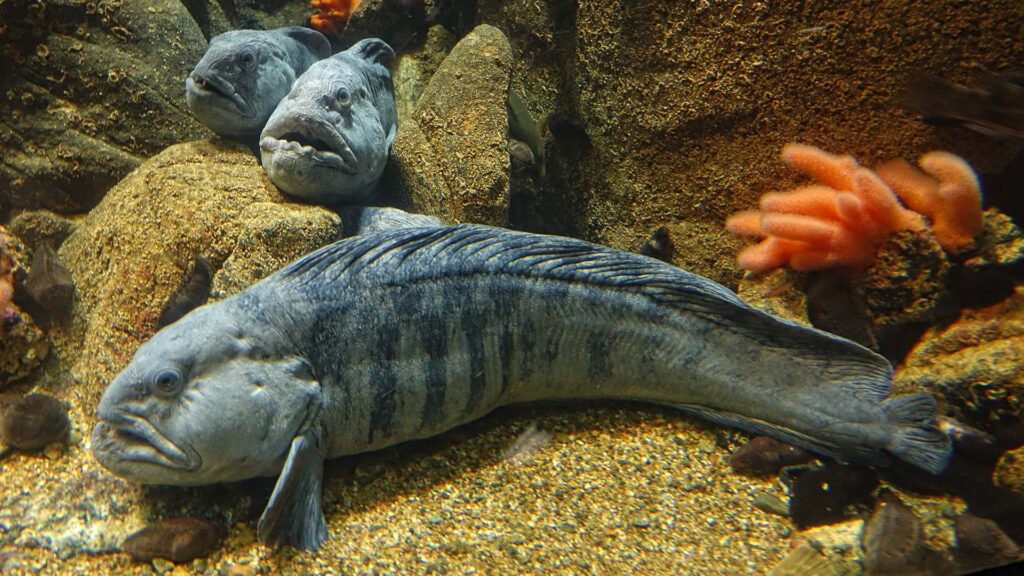
The wolffish is long with a large head. It is common to reach 60-110cm in length and weigh 2,5-15kg. It has a rounded forehead and thick lips. Inside its mouth, it has four curved fangs at the front.
The wolffish lives at a depth of 10-300 meters and does best on clay- or sandy ground. During the spawning season, in autumn and early winter, the wolffish loses its teeth, is toothless for a while, and does not eat. Then new teeth grow, and it becomes thin. It goes up into the shallow waters in search of food, primarily all kinds of benthic species. Horse mussels, ocean quahaug, crustaceans, snails, and sea urchins are popular. The wolffish also eat many other fish, especially halibut.
A lot of wolffish is caught by Iceland and is mainly eaten. A small part is dried.
Monkfish
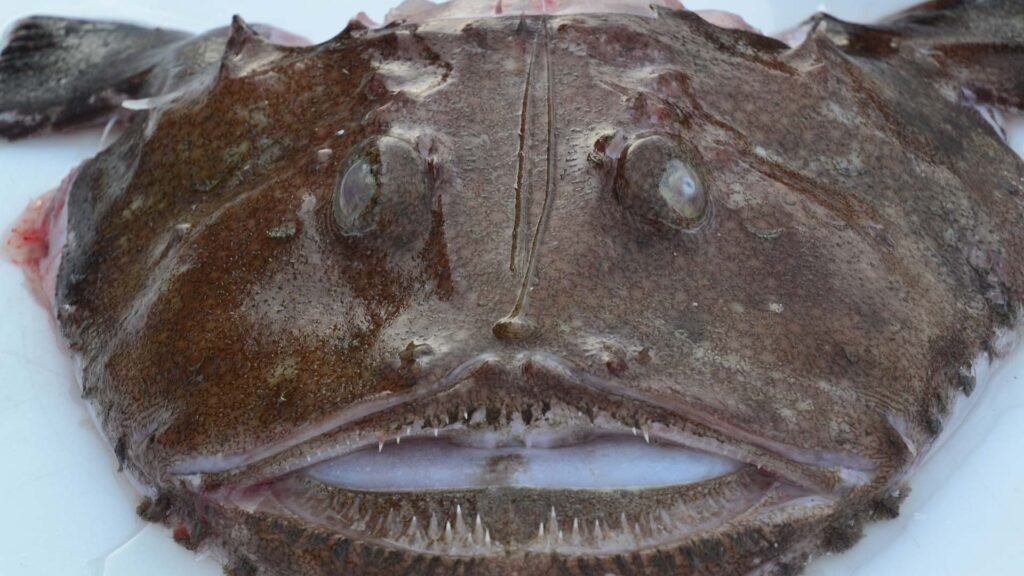
The monkfish has a large head and an enormous mouth with sharp teeth. Many believe it is one of the ugliest fish in the sea. The fish mainly eats other fish. It hides in the sediments, and when its prey gets closer, it snaps it up and swallows it whole. They live in shallow waters all the way down to 1800m deep waters. Even if it usually is a bottom dweller, it has occasionally been seen by the water’s surface, eating sea birds.
The monkfish grows rapidly in the first year of life and reaches sexual maturity at 4 to 6 years and 40 to 80 cm in length. The largest monkfish caught in Icelandic waters was 155 cm long and 35 kg.
Most monkfish are caught in the fall until winter when the bulk of the stock moves to deep spawning grounds. Most of the fish is exported fresh to the UK. It is further processed there, and a large part is sold to Spain or France.
Halibut
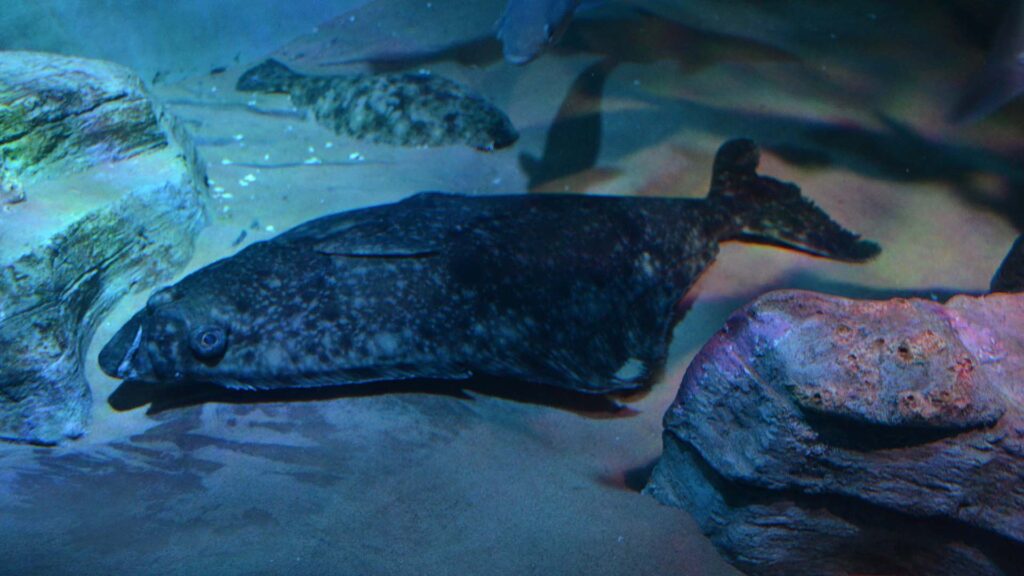
This is one of the biggest bony fish found around Iceland, the biggest ever caught being 4,7m long.
Halibut can be found in the northern North Atlantic Ocean, and a closely related species, the Pacific halibut, is found in the North Pacific. Halibut is found all around the country but is more common in the warm seas in the south and west of the country. It spawns at a depth of about 2000 m, and the young are found in shallow waters at the age of one year. The juveniles then gradually move deeper, and at 9-10, they join the adult population, mostly at greater depths.
Halibut may have been fished around Iceland since the settlement period in the 9th century. Still, it wasn’t until the 19th century that it increased and became industrial. The first trawler to come to Iceland was in 1891 from England. Foreign trawlers increased steadily until the beginning of the 20th. Icelanders believed they mainly were fishing for cod and haddock, but they were fishing halibut and plaice.
The halibut is mainly caught with longline fishing. Still, the quota has steadily decreased in recent years due to reduced stock size.
Plaice
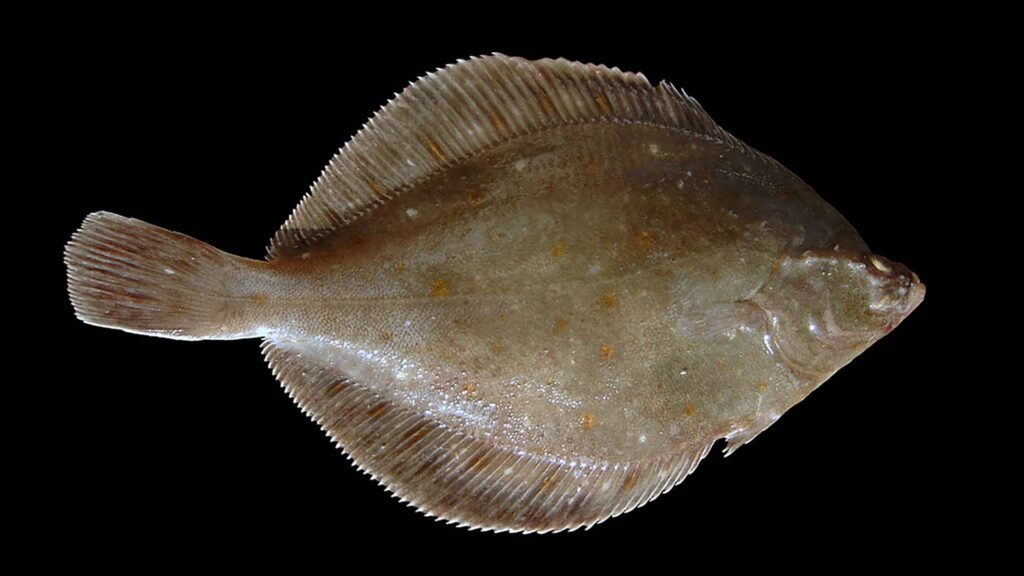
The largest plaice ever to be fished by Iceland was 85cm long, but on average, they’re 30-50cm long.
Plaice is a good food fish, and quite a lot of it has been caught by Iceland. The catch is usually between 5,000 and 10,000 tons per year, similar to or more than the combined catch of all other flatfish (except halibut).
The bulk of the catch was initially caught by British trawlers, which stopped after the cod wars. Nowadays, Icelanders fish mostly with boat seine, as that fishing gear is particularly suitable for flatfish fishing. Quite a few are also caught with bottom trawls.
Herring
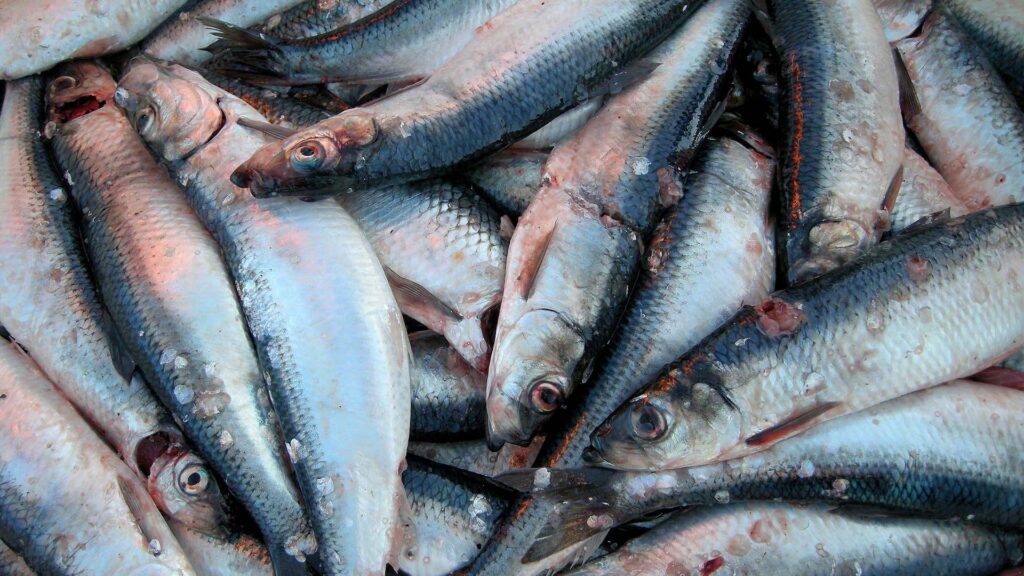
The herring is a classic pelagic fish, slippery with a silvery body, dark above and light below. The standard size is between 30 and 40 cm, but the largest measured in Icelandic waters was 46.5 cm. Herring can reach up to 25 years of age. It lives on planktonic crustaceans, mainly plankton. It is one of the most common fish species in the North Atlantic, and its distribution is almost the same as the cod.
Herring has been fished for centuries in Iceland, but in the first half of the 20th century, a so-called “herring adventure” occurred. Vast schools of herring came to Icelandic waters, and Icelanders fished like there was no tomorrow. That inevitably ended in a complete crash of the herring stock. In 1966, Icelanders caught 25% of all herring in the world.
Two types of herring spawn and live in Icelandic waters. One that spawns during spring and one during the summer. The spring herring was the one Icelanders overfished. When that died out, Icelanders fished a bit of the summer herring. It wasn’t until 1994 that the spring-herring stock had gotten large enough again to be sustainable to fish. You will not often find fresh herring for sale in stores in Iceland; it is mostly marinated in all kinds of different spices and sauces to be eaten cold on rúgbrauð, for example.
It is a popular Christmas buffet food.
Capelin
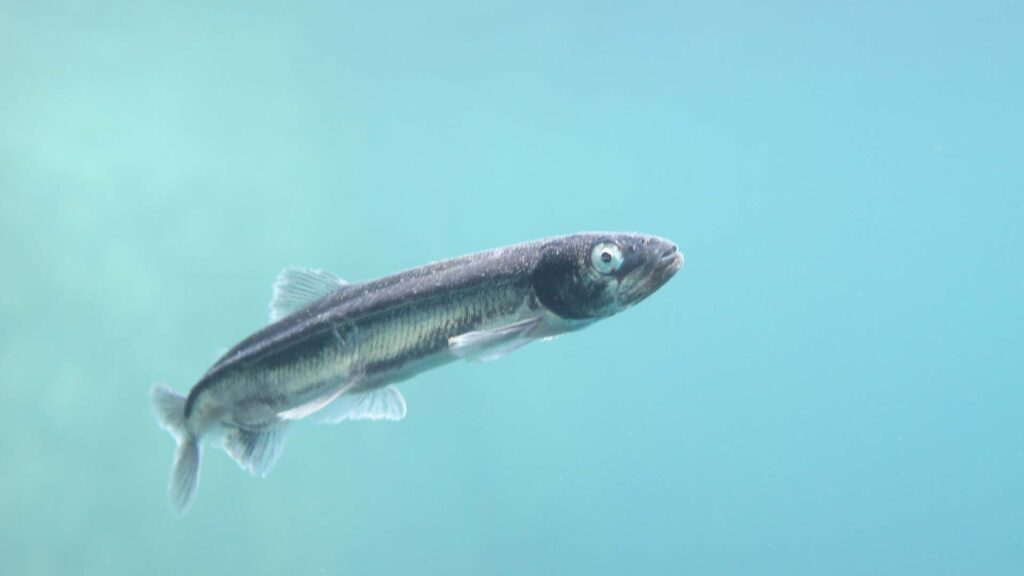
Capelin is one of Iceland’s most important fish species. It is an important commercial fish and plays a vital role in the ocean’s food chain as an intermediary between zooplankton and larger fish. Most types of fish, especially demersal fish, eat capelin at some stage. For example, capelin is estimated to be about 40% of the cod’s total diet.
The capelin is small, grows to about 15-18cm long, and does not live for a long time compared to other fish. It reaches puberty at 3-4 years of age. Mature capelins gather in large turfs and travel around Iceland to their spawning grounds in South and Southwest Iceland. While they travel, the fish becomes the main feed of numerous other marine species. The spawning takes place on a shallow path and is very stressful. After spawning, all the male and most female fish die.
Before 1965, Icelanders did not care much about capelin. Their whole focus was on herring. However, after the herring stock crashed, fishermen turned towards capelin. The stock size is, however, and some years there’s no quota given by the Icelandic government. The largest part of the catch is melted into fish oil and fish meal.
The fish meal is used as feed for livestock and in fish farming, but the oil is used in various foods and industrial products. It has been increasing in recent years to freeze fish for food. The roe is the most valuable part of the capelin. Still, they’re only suitable for processing during a short period, just before it spawns. Most of the oil and meal is exported to Norway and is used in salmon farms. Frozen capelin and row are sold to Japan and Eastern Europe.
Other fishy creatures
Other fish (and sea creatures) that are caught in Iceland: Dab, American plaice, Deep-sea rosefish, Whiting, Thorny skate, Skate, Dogfish, Halibut, Megrim, Norway pout, Shagreen ray, Black scabbardfish, Sea urchin, Sea Cucumbers, Male lumpfish, Female lumpfish, langoustine, and prawns. Lemon sole, Witch flounder, Ling, Torsk, Coalfish
Please signup HERE for our newsletter for more fun facts and information about Iceland!

